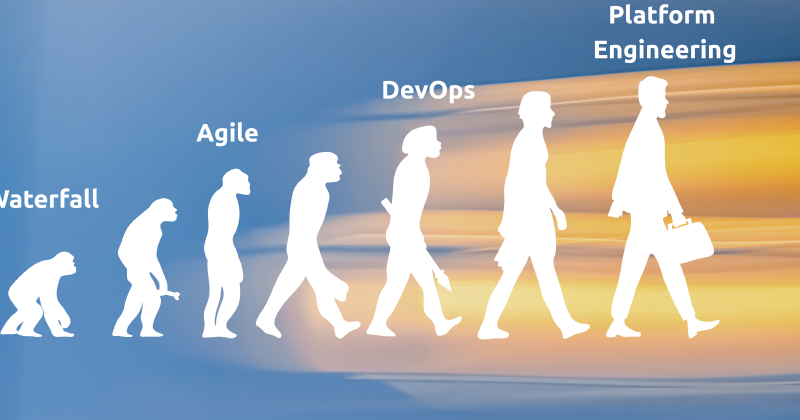Modern software teams have more tools than ever. Pipelines, configs, dashboards, alerts,… And yet, shipping software still feels… harder than it should be.
If you’re a developer, you’re likely juggling YAML files, CI/CD pipelines, and cloud configs, on top of writing actual code.
If you’re on a DevOps team, you’re probably putting out fires while maintaining an ever-growing stack. And if you’re a manager, you’ve probably seen delivery slow down.
Platform Engineering has emerged to tackle all these challenges.
This is the opening post in our series “The Journey to Platform Engineering”. In this blog, we’ll cover how software development has evolved and the persistent challenges that ultimately led to a new approach: Platform Engineering.
A Quick Look Back at Software Development
Not long ago, software was built using the Waterfall model: a rigid, step-by-step process where everything had to be planned and completed in order: requirements, design, development, testing, and deployment. It worked when change was rare, but it offered little room to revisit and adjust earlier decisions. This lack of flexibility ultimately led to long development cycles that couldn’t keep up with the fast pace of business.
Then came Agile, introduced in 2001 with the Agile Manifesto. This method led to shorter cycles, constant feedback, and more flexibility. It undeniably helped teams move faster and adapt better.
However, Agile didn’t fully fix the divide between software development (Dev) and IT operations (Ops). Developers focused on building and delivering features quickly, while Ops prioritized stability and uptime. This misalignment often created friction and slowed the whole development process down.
That’s where DevOps came in. Around 2007-2008, the DevOps movement began to gain traction. It aimed to end these silos and bring more automation, collaboration, and shared responsibility.
And it worked! For a while…
When DevOps Started to Struggle
DevOps brought undeniable improvements in terms of increasing collaboration and shared responsibility between development and operations teams. However, as software systems became more complex, DevOps practices started to show their limits.
Suddenly, developers were expected to manage everything: infrastructure, deployment, monitoring, security, orchestration, CI/CD, and more. The burden for teams started increasing, and they started spending more time dealing with the pipeline than actually writing software.
The idea of “you build it, you run it” was well-intentioned. But, in practice, it overloaded teams with too many tools and tasks. DevOps helped break down silos, but ended up creating new challenges around complexity.
Enter Platform Engineering
Platform Engineering emerged as an evolution of DevOps. Its goal is to make it easy for teams to build software, without forcing them to become experts in every part of the tech stack.
It creates a paved path: reusable tools, services, and standards that remove unnecessary complexity from everyday development.
Developers don’t need to start from scratch every time. They get self-service access to what they need, within a safe and governed framework. This enables teams to focus on building software instead of managing tools and pipelines.
Just as importantly, Platform Engineering helps DevOps scale. Instead of every team reinventing the wheel, Platform Engineering brings consistency and reusability across the organization.
At its core, Platform Engineering frees teams from unnecessary infrastructure decisions and lets them focus on what they do best: creating.
Coming Up Next
Now that we understand why Platform Engineering was needed, we’ll explore what Platform Engineering looks like in practice. In the next blog post, we’ll cover how Internal Developer Platforms (IDPs) work and how they help teams stay productive without getting overwhelmed.





